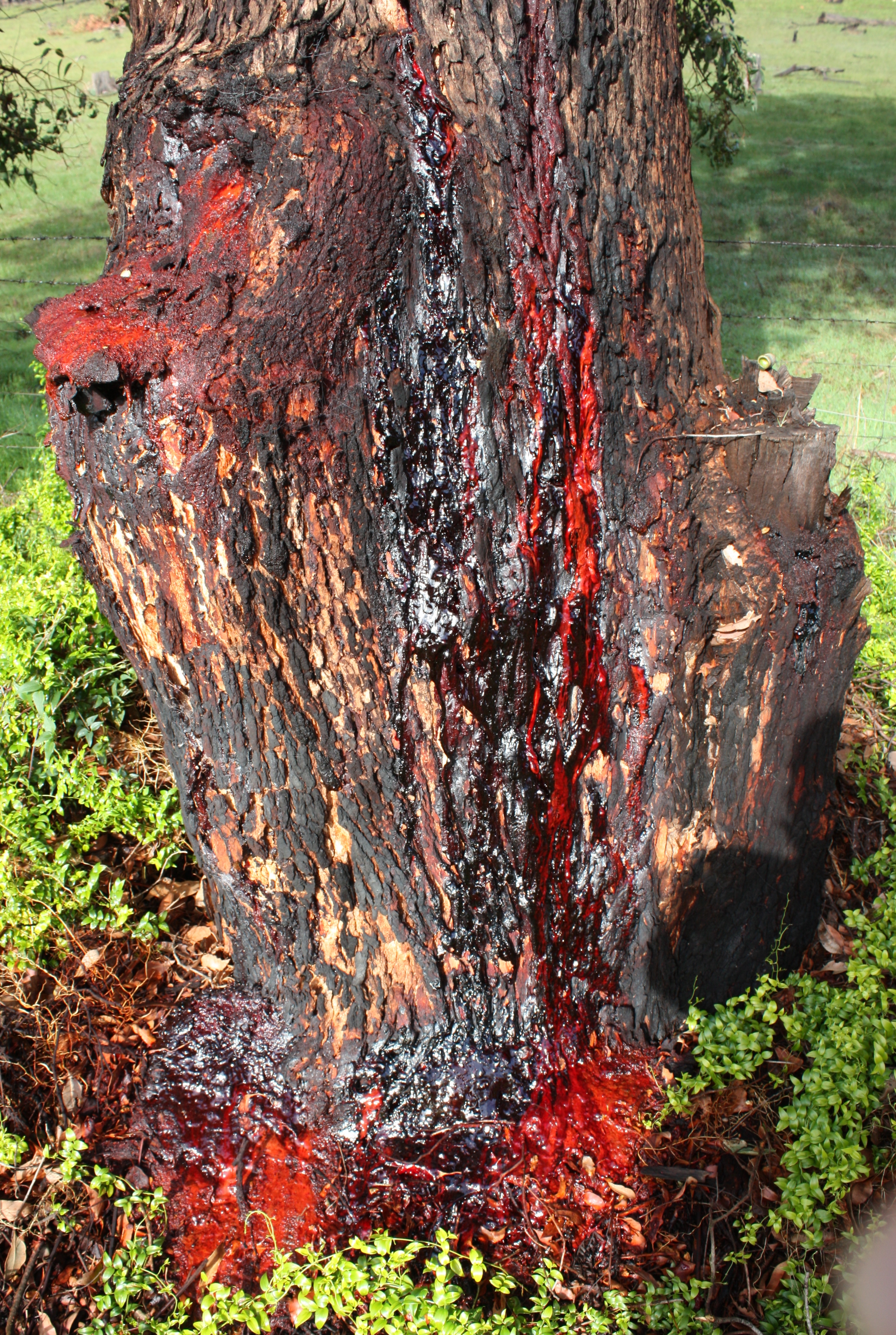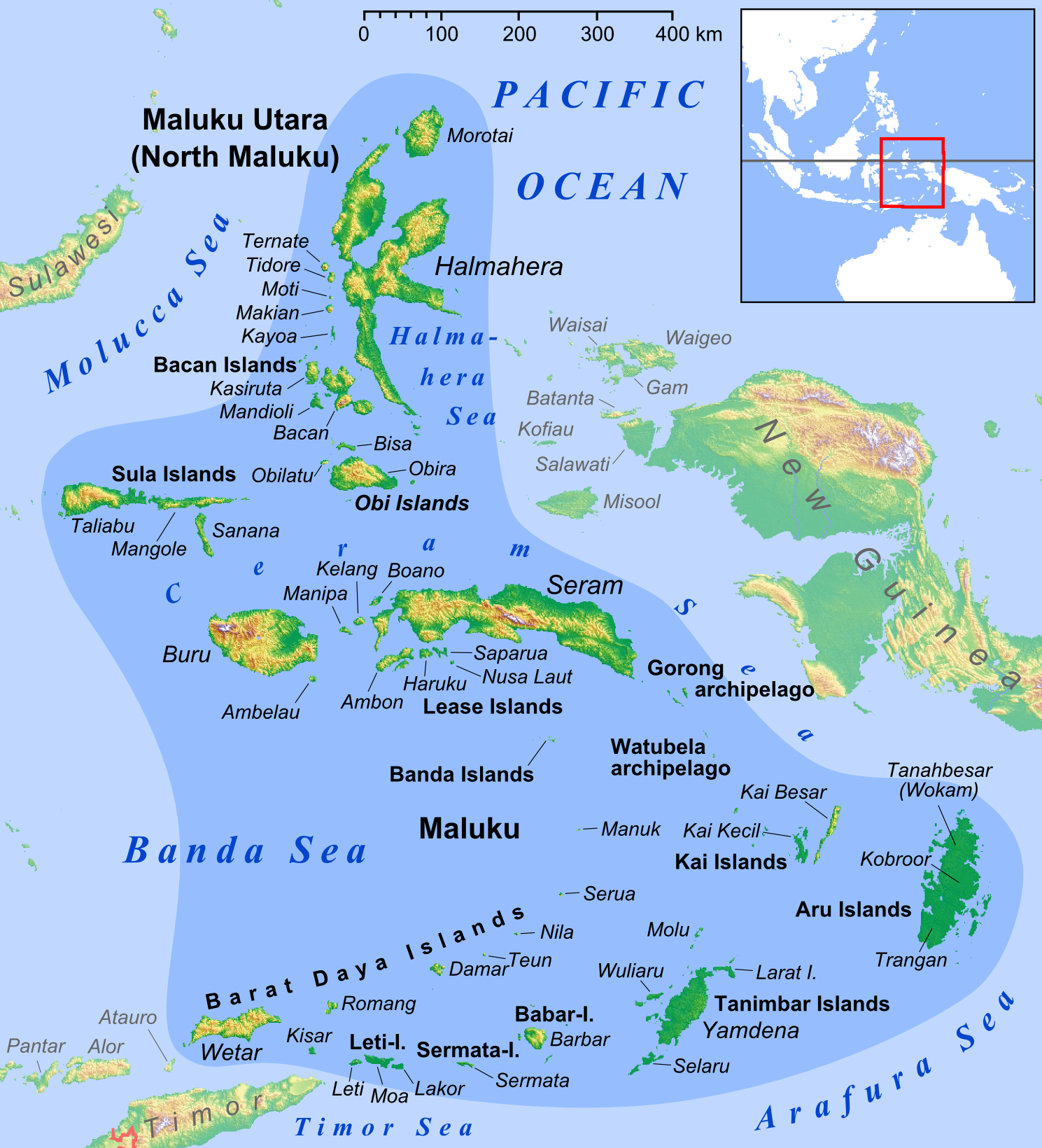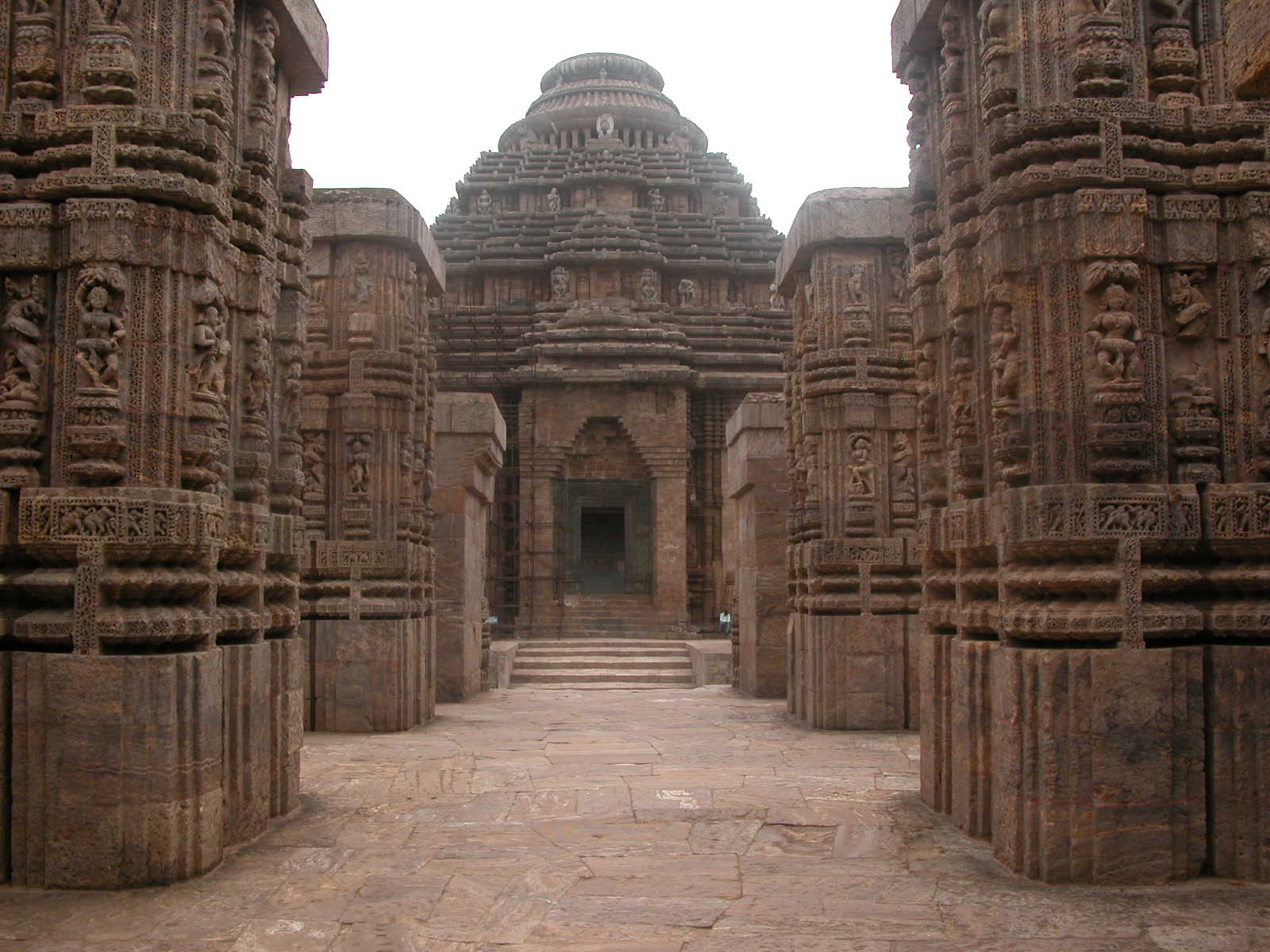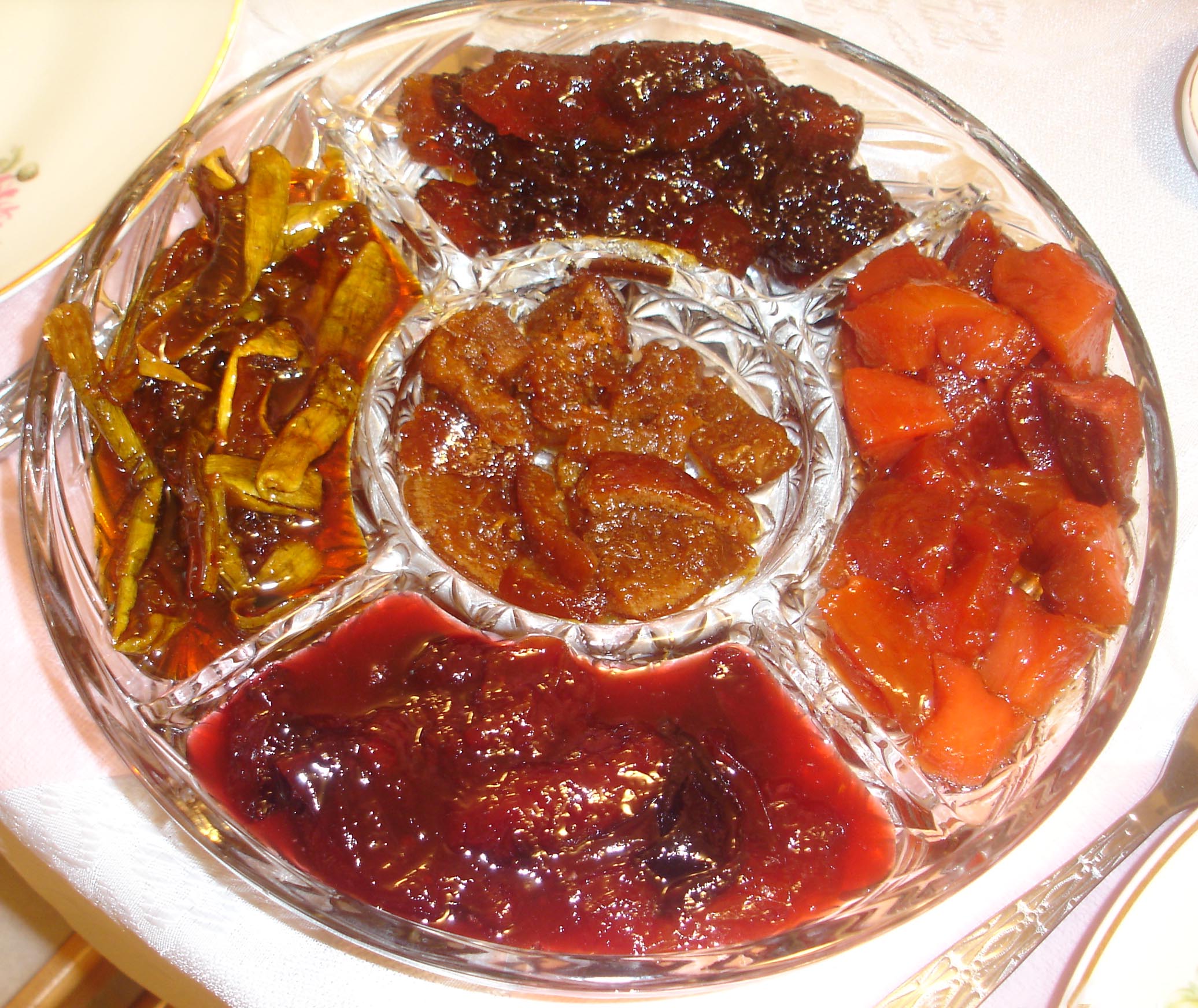|
Kino (gum)
Kino is a botanical gum produced by various trees and other plants, particularly bloodwood species of eucalypts ('' Angophora'', ''Corymbia'', ''Eucalyptus'') and '' Pterocarpus'', in reaction to mechanical damage, and which can be tapped by incisions made in the trunk or stalk. Many ''Eucalyptus'', ''Angophora'' and ''Corymbia'' species are commonly referred to as 'bloodwoods', as the kino usually oozes out a very dark red colour. Kino flow in angiosperms contrasts with resin flow in conifers. The word ''kino'' is of Indian origin. In Australia, "red gum" is a term for kino from bloodwood trees and red acaroid resin from ''Xanthorrhoea'' spp. Composition Astringent tannin compounds are a major active component of kinos.Edited by Pearsall, J., and Trumble, B., ''The Oxford English Reference Dictionary'', Oxford University Press, Second Edition, 1996, The chief constituent of kino is kinotannic acid, of which it contains 70 to 80 per cent. It also contains kino red, a phlobap ... [...More Info...] [...Related Items...] OR: [Wikipedia] [Google] [Baidu] |
Corymbia Calophylla Kino
''Corymbia'', commonly known as bloodwoods, is a genus of about one hundred species of tree that, along with ''Eucalyptus'', ''Angophora'' and several smaller groups, are referred to as eucalypts. Until 1990, corymbias were included in the genus ''Eucalyptus'' and there is still considerable disagreement among botanists as to whether separating them is valid. As of January 2020, ''Corymbia'' is an accepted name at the Australian Plant Census. Description Eucalypts in the genus ''Corymbia'' are trees, sometimes mallee-like, that either have rough, fibrous or flaky bark, or smooth bark that is shed in small flakes or short strips. Young plants and coppice regrowth have leaves that differ from adult leaves. The adult leaves are arranged alternately (strictly disjunct opposite, but appearing alternate), with oil glands. The flower buds are arranged in groups on a branching peduncle, each branch usually with seven buds, but with the pedicels of differing lengths, so that the inflo ... [...More Info...] [...Related Items...] OR: [Wikipedia] [Google] [Baidu] |
Flocculent
In colloidal chemistry, flocculation is a process by which colloidal particles come out of suspension to sediment in the form of floc or flake, either spontaneously or due to the addition of a clarifying agent. The action differs from precipitation in that, prior to flocculation, colloids are merely suspended, under the form of a stable dispersion (where the internal phase (solid) is dispersed throughout the external phase (fluid) through mechanical agitation) and are not truly dissolved in solution. Coagulation and flocculation are important processes in fermentation and water treatment with coagulation aimed to destabilize and aggregate particles through chemical interactions between the coagulant and colloids, and flocculation to sediment the destabilized particles by causing their aggregation into floc. Term definition According to the IUPAC definition, flocculation is "a process of contact and adhesion whereby the particles of a dispersion form larger-size clusters". Flo ... [...More Info...] [...Related Items...] OR: [Wikipedia] [Google] [Baidu] |
Ambon Island
Ambon Island is part of the Maluku Islands of Indonesia. The island has an area of and is mountainous, well watered, and fertile. Ambon Island consists of two territories: the city of Ambon, Maluku, Ambon to the south, and three districts (''kecamatan'') of the Central Maluku Regency to the north. The main city and seaport is Ambon, Maluku, Ambon (with a 2020 Census population of 347,288), which is also the capital of Maluku (province), Maluku Provinces of Indonesia, province, while those districts of Maluku Tengah Regency situated on Ambon Island had a 2020 Census population of 128,069. By mid 2023 those populations were estimated to have become 354,052 and 128,754 respectively, resulting in an all-island population of 482,806. Ambon has an Pattimura Airport, airport and is home to the Pattimura University and Open University (Universitas Terbuka), state universities, and a few private universities, which include Darussalam University (Universitas Darussalam, UNDAR) and Univer ... [...More Info...] [...Related Items...] OR: [Wikipedia] [Google] [Baidu] |
Malabar (Northern Kerala)
The Malabar Coast () is the southwestern region of the Indian subcontinent. It generally refers to the western coastline of India stretching from Konkan to Kanyakumari. Geographically, it comprises one of the wettest regions of the subcontinent, which includes the southern tip of Goa, Kanara region of Karnataka, all of Kerala and Kanyakumari region of Tamil Nadu. Kuttanad, which is the point of the lowest altitude in India, lies on the Malabar Coast. Kuttanad, also known as ''The Rice Bowl of Kerala'', is among the few places in the world where cultivation takes place below sea level. The peak of Anamudi, which is also the point of highest altitude in India outside the Himalayas, lies parallel to the Malabar Coast on the Western Ghats. The region parallel to the Malabar Coast gently slopes from the eastern highland of Western Ghats ranges to the western coastal lowland. The moisture-laden winds of the Southwest monsoon, on reaching the southernmost point of the Indian sub ... [...More Info...] [...Related Items...] OR: [Wikipedia] [Google] [Baidu] |
East India
East India is a region consisting of the Indian states of Bihar, Jharkhand, Odisha and West Bengal and also the union territory of the Andaman and Nicobar Islands. The states of Bihar and West Bengal lie on the Indo-Gangetic plain. Jharkhand is situated on the Chota Nagpur Plateau. Odisha lies on the Eastern Ghats and the Deccan Plateau. West Bengal's capital Kolkata is the largest city of this region. The Kolkata Metropolitan Area is the country's third largest metropolitan region. The region is bounded by Bhutan, Nepal and the state of Sikkim in the north, the states of Uttar Pradesh and Chhattisgarh on the west, the state of Andhra Pradesh in the south and the country of Bangladesh in the east. It is also bounded by the Bay of Bengal in the south-east. It is connected to the Seven Sister States of Northeast India by the narrow Siliguri Corridor in the north east of West Bengal. East India has the fourth-largest gross domestic product of all Indian regions. The regio ... [...More Info...] [...Related Items...] OR: [Wikipedia] [Google] [Baidu] |
Pterocarpus Erinaceus
''Pterocarpus erinaceus'' is an endangered tree species native to the Sahelian region of West Africa. It is listed in Appendix II of the Convention on International Trade in Endangered Species of Wild Fauna and Flora. It is used for fuel wood, for medicinal purposes, as a woodworking material, and is useful as a nitrogen-fixing plant to improve nutrient-depleted farming land. It has several common names, including kosso, barwood, African kino tree, muninga, and ''vène''; ''mukwa'' is used for this species as well as other ''Pterocarpus''. Groves of the tree can be found on the savannahs of West Africa, but it is becoming increasingly rare and is sometimes cultivated. The tree also grows in forests of Comoé National Park in Côte d'Ivoire, a region geographically close to the Sahel but with a higher moisture regime due to its location between two large rivers. Also, the tree grows in abundance in Kurmi Local Govt. of Taraba State in Nigeria. The tree grows to about 11 meters in h ... [...More Info...] [...Related Items...] OR: [Wikipedia] [Google] [Baidu] |
Gambia (river)
The Gambia River (formerly known as the River Gambra, French: ''Fleuve Gambie'', Portuguese: ''Rio Gâmbia'') is a major river in West Africa, running from the Fouta Djallon plateau in north Guinea westward through Senegal and The Gambia to the Atlantic Ocean at the city of Banjul. It is navigable for about half that length. The river is strongly associated with The Gambia, the smallest country in mainland Africa, which occupies the downstream half of the river and its two banks. Geography The Gambia River runs a total length of . From the Fouta Djallon, it runs northwest into the Tambacounda Region of Senegal, where it flows through the Parc National du Niokolo Koba, then is joined by the Nieri Ko and and passing through the Barrakunda Falls before entering the Gambia at Koina. At this point, the river runs generally west, but in a meandering course with a number of oxbows, and about from its mouth it gradually widens, to over wide where it meets the sea. Crossings ... [...More Info...] [...Related Items...] OR: [Wikipedia] [Google] [Baidu] |
John Fothergill (physician)
John Fothergill FRS (8 March 1712 – 26 December 1780) was an English physician, plant collector, philanthropist and Quaker. His medical writings were influential, and he built up a sizeable botanic garden in what is now West Ham Park in London. Life and work Fothergill was born at Carr End, near Bainbridge in Yorkshire, the son of John Fothergill (1676–1745), a Quaker preacher and farmer, and his first wife, Margaret Hough (1677–1719). After studying at Sedbergh School, Fothergill was apprenticed to an apothecary. In 1736, he obtained the degree of Doctor of Medicine at Edinburgh and followed this by further studies at St Thomas's Hospital, London. After visiting continental Europe in 1740, he settled in London, where he gained an extensive practice. During the influenza epidemics of 1775 and 1776 he is said to have treated 60 patients a day. In 1745, Fothergill gave a brief lecture to the Royal Society of London, citing the work of a Scottish physician and surgeon, W ... [...More Info...] [...Related Items...] OR: [Wikipedia] [Google] [Baidu] |
Amber
Amber is fossilized tree resin. Examples of it have been appreciated for its color and natural beauty since the Neolithic times, and worked as a gemstone since antiquity."Amber" (2004). In Maxine N. Lurie and Marc Mappen (eds.) ''Encyclopedia of New Jersey'', Rutgers University Press, . Amber is used in jewelry and as a healing agent in Traditional medicine, folk medicine. There are five classes of amber, defined on the basis of their chemical constituents. Because it originates as a soft, sticky tree resin, amber sometimes contains animal and plant material as Inclusion (mineral), inclusions. Amber occurring in coal seams is also called resinite, and the term ''ambrite'' is applied to that found specifically within New Zealand coal seams. Etymology The English word ''amber'' derives from Arabic from Middle Persian 𐭠𐭭𐭡𐭫 (''ʾnbl'' /ambar/, “ambergris”) via Medieval Latin, Middle Latin ''ambar'' and Middle French ''ambre''. The word referred to what is n ... [...More Info...] [...Related Items...] OR: [Wikipedia] [Google] [Baidu] |
Jelly (fruit Preserves)
Fruit preserves are preparations of fruits whose main preserving agent is sugar and sometimes acid, often stored in glass jars and used as a condiment or spread. There are many varieties of fruit preserves globally, distinguished by the method of preparation, type of fruit used, and its place in a meal. Sweet fruit preserves such as jams, jellies, and marmalades are often eaten at breakfast with bread or as an ingredient of a pastry or dessert, whereas more savory and acidic preserves made from " vegetable fruits" such as tomato, squash or zucchini, are eaten alongside savory foods such as cheese, cold meats, and curries. Techniques There are several techniques of making jam, with or without added water. One factor depends on the natural pectin content of the ingredients. When making jam with low-pectin fruits like strawberries, high-pectin fruit like orange can be added, or additional pectin in the form of pectin powder, citric acid or citrus peels. Often the fruit will be ... [...More Info...] [...Related Items...] OR: [Wikipedia] [Google] [Baidu] |
Ribes Rubrum
The redcurrant or red currant (''Ribes rubrum'') is a member of the genus ''Ribes'' in the gooseberry family. It is native to western Europe. The species is widely cultivated and has escaped into the wild in many regions. Description ''Ribes rubrum'' is a deciduous shrub normally growing to tall, occasionally , with five-lobed leaves arranged spirally on the stems. The flowers are inconspicuous yellow-green, in pendulous racemes, maturing into bright red translucent edible berries about diameter, with 3–10 berries on each raceme. An established bush can produce of berries from mid- to late summer. Phytochemicals Redcurrant fruits are known for their tart flavor, a characteristic provided by a relatively high content of organic acids and mixed polyphenols. As many as 65 different phenolic compounds may contribute to the astringent properties of redcurrants, with these contents increasing during the last month of ripening. Twenty-five individual polyphenols and other n ... [...More Info...] [...Related Items...] OR: [Wikipedia] [Google] [Baidu] |
Diethyl Ether
Diethyl ether, or simply ether, is an organic compound with the chemical formula , sometimes abbreviated as . It is a colourless, highly Volatility (chemistry), volatile, sweet-smelling ("ethereal odour"), extremely flammable liquid. It belongs to the ether class of organic compounds. It is a common solvent and was formerly used as a general anesthetic. Production Most diethyl ether is produced as a byproduct of the vapor-phase Hydration reaction, hydration of ethylene to make ethanol. This process uses solid-supported phosphoric acid Catalysis, catalysts and can be adjusted to make more ether if the need arises: Vapor-phase Dehydration reaction, dehydration of ethanol over some Aluminium oxide, alumina catalysts can give diethyl ether yields of up to 95%. : Diethyl ether can be prepared both in laboratories and on an industrial scale by the acid ether synthesis. Uses The dominant use of diethyl ether is as a solvent. One particular application is in the production of cell ... [...More Info...] [...Related Items...] OR: [Wikipedia] [Google] [Baidu] |







